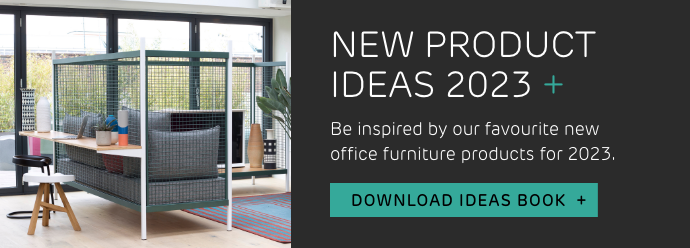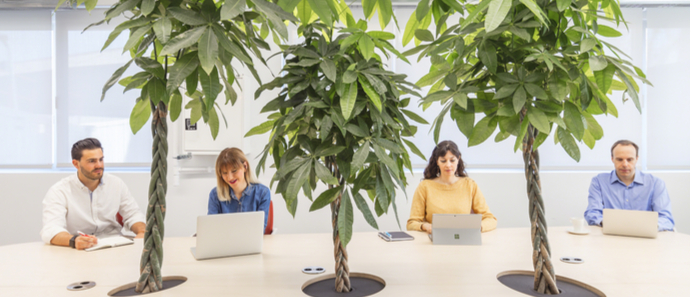 After the enforced confinement of lockdown many of us are champing at the bit to get back to the workplace. What are office design trends that will make this possible in the months and years to come?
After the enforced confinement of lockdown many of us are champing at the bit to get back to the workplace. What are office design trends that will make this possible in the months and years to come?
In the words of Lew Epstein, Chief Designer at Steelcase, we are realising that often
“the work place is the best place for getting work done.”
Communal Spaces
Crucially we’re missing the creative and social aspects of the office - the vital human need to share space and ideas that ultimately drive a teams’ productvity.
But we can’t expect it to be like it was before.
Social distancing will likely prevail for a while. Employers are reimagining offices as places of gathering, as hubs for collaboration, rather than spaces for sustained ‘heads down’ work. As offices reopen, therefore, communal spaces are trending as a topic.
In this new world, communal spaces need to be set up to support a wider range of simultaneous activity such as:
- Client meetings
- One-to-ones
- Socialising
- Solo preparation
- ‘Town hall’ style gatherings
The way we lay them out, design and furnish them has, therefore, become a real focus of attention for the future. And we have identified some of the key areas businesses will need to look at as they make these spaces fit for their new purpose:
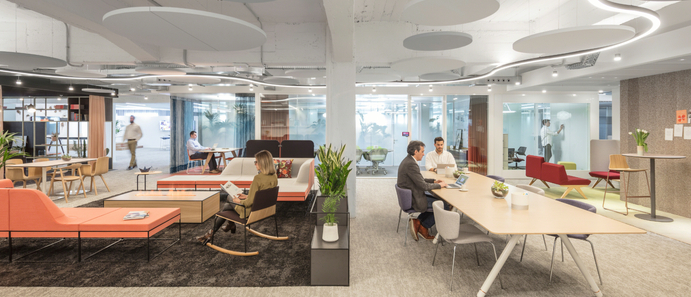
Proximity
“The proximity of furniture-to-furniture must consider density and adjacencies in new ways – and cue distancing behaviours.”
These spaces might feature oversized furniture for distanced seating and talking. Lew Epstein suggests the use of big cushions, arm rests, throws and indoor planting to act as unconscious prompts for greater spacing in larger indoor environments.
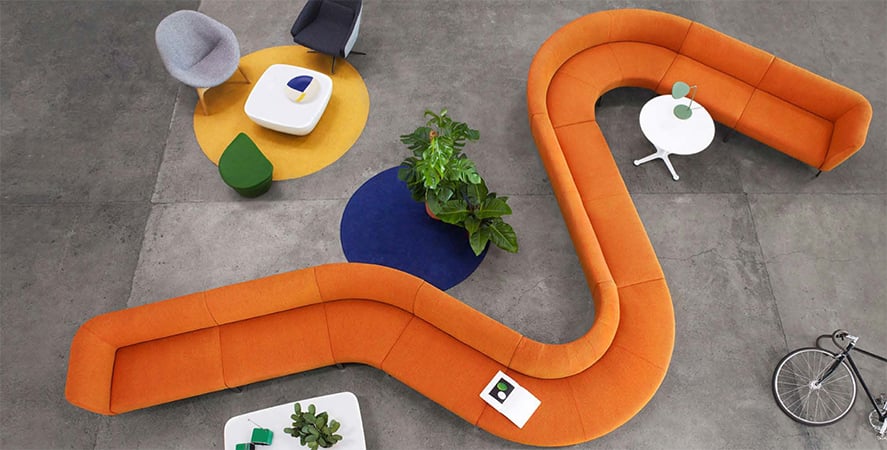
Privacy
“Privacy – acoustical, visual, informational, territorial – is still critical to making today’s shared spaces productive.”
Communal spaces need to pull off the trick of being at once open, and capable of supporting more focused, uninterrupted work when required. The use of moveable screens and set-piece biophilic features can all help section off spaces, while helping with soundproofing in organic ways.
Posture
“Providing a range of postures – seated, stool height, lounging, perching, standing – enable different kinds of work to happen more effectively, and contribute to health and wellbeing.”
People will use the space in different ways - from working on last minute changes on presentations, to hosting team briefings and larger, social gatherings. The furniture we choose and the range of options we give will help workers find the space that can support them most effectively. We should also consider how people can access power points when they need them, too, as shifting about looking to recharge appliances is a common issue in big spaces.
Personality
“The aesthetics of shared spaces often drive design – to help set the tone for an organisation’s brand and culture.”
Many commentators have identified ‘resimercial’ as one of the design trends to take note of this year.
Resmercial is a combination of “residential” and “commercial,” that brings aspects of home into the contemporary workspace. It brings a focus on tactile textures, materials and accessories that evoke a sense of warmth, comfort and familiarity.
As people return to workplaces for the first time in many months, this softer design motif can emphasises wellbeing and psychological security as an antidote to all the last 12 months’ disruption.
The challenge will be to find the softer materials that are also suitable for a more hygiene conscious age. Bleach cleanable fabrics are currently trending as a solution to this problem. Meanwhile faux leathers and wood finishes are all surfaces that can lend warmer, more homely tones to what would otherwise be a sterile office environment.
Designing for Phygital
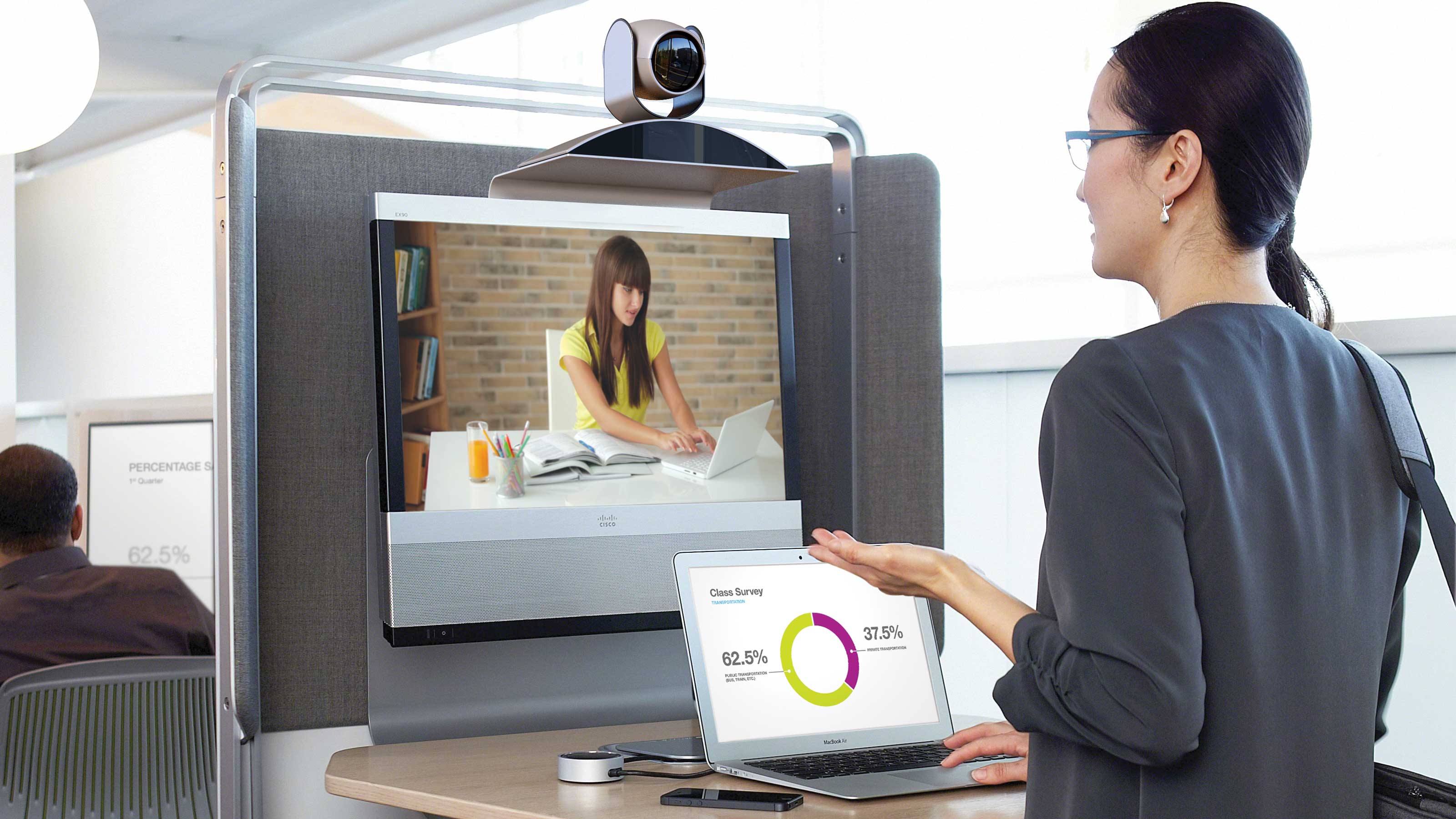
2020 was for many businesses an enforced mass experiment in the pitfalls and benefits of home working. And it has been a surprising success.
We’re not envisaging the death of the office, though, but instead an acceleration of the trend for greater flexible working and more ‘mixed presence’ teams.
The rise of ‘phygital’ spaces, where some members of the team are in the office and others call in via video conference is leading to what experts are calling ‘presence disparity’.
Presence disparity refers to the tendency of physical teams to ignore or forget about team members on the ‘end of a line’ - and teams in an office to be lost acoustically and visually to those calling in.
As more people will be working from home at different times it’s a topic that need to be taken seriously:
- Remove video conferencing screens from fixed locations - consider ‘easel mounted options’
- Consider camera and microphone placements carefully.
- Choose software that includes virtual whiteboards which every participant can contribute to
- Develop a flexible layout for meeting rooms that allows all users to be on camera and clearly audible
- In open spaces use partitioning screens and hands-free headsets even for office-bound participants to improve sound quality
- Consider setting up a “wormhole”—a continuously open, real-time video connection that acts like an open window into the team space for workers at home to feel part of the whole.
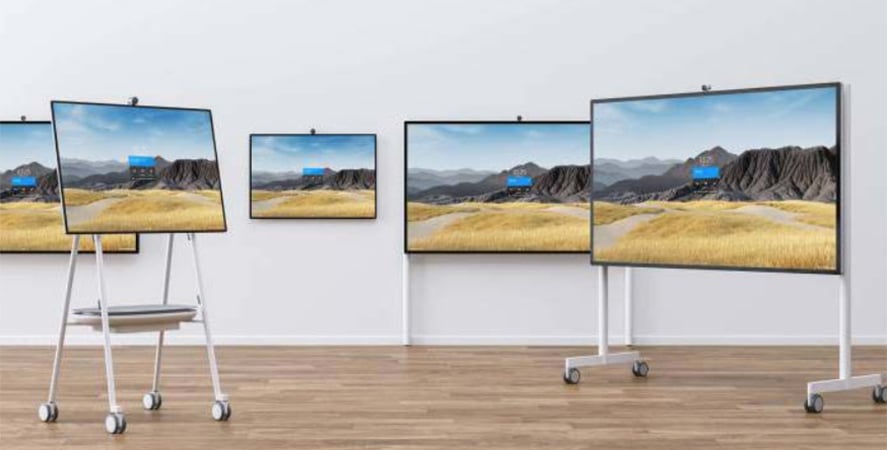
Will Virtual Reality become a reality?
“If you’re the only person on [Google] Hangouts, you’re guaranteed new elements of a ‘fear of missing out. Therefore, it’s really important that our meeting rooms are able to level the playing field.
PwC, is buying thousands of virtual reality headsets to help battle Zoom fatigue and correcting the comms imbalance for employees in mixed presence teams. In fact in the UK it is already running two to three team meetings via VR each week. But it is also redesigning offices with cafe-style meeting areas, equipping staff with higher grade microphones and larger video meeting screens.
What will be the other design implications of more VR usage in the workplace? Will those in the office need access to individual booths to cut down on background noise and not distract others. Only time and experimentation will tell.
Wellbeing
While most knowledge workers (54%) expect to have a mixed presence in the workplace, not every leader agrees.
Goldman Sachs’ boss David Solomon made it very clear earlier this month that he expected most of his workers to be back in the office full time when the pandemic eases up:
“It’s not a new normal. It’s an aberration that we’re going to correct as soon as possible.”
But if businesses want a mass return to the office, offices will need to be designed to maximise the well being of their occupants.
Trends to open offices to access more light and more natural ventilation have been a big focus in recent years, anyway. Meanwhile, biophilia has also moved centre stage in many modern developments and fit outs. As noted above this trend looks set to continue.
But last year, even before the pandemic, Tim Hookham, one of our panel of ex perts architects predicted that outside space would become increasingly important in the workplace design of the future.
“I expect to see more organisations using a modern expression of outdoor spaces. We’re already seeing more use of biophilic design to bring the outside in, but there is much we can use of the outdoor space to inspire people or give them an opportunity to escape”
Now, in the aftermath of the Covid-19 crisis, will we see a surge of interest in exploiting balconies, and roofspaces? Can opening up the office to the outdoors help individuals and teams adjust to sustained office life once again?




